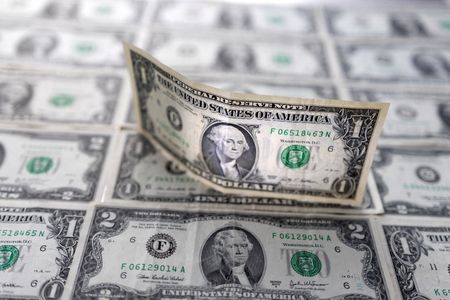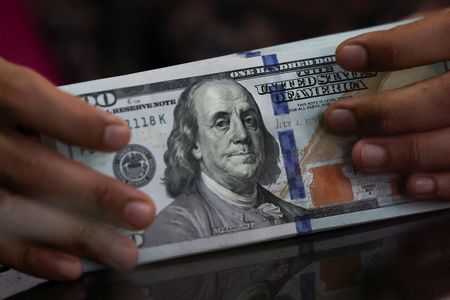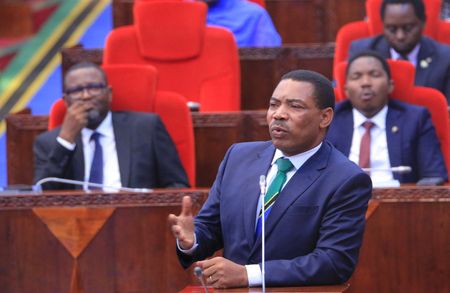By Rae Wee
SINGAPORE (Reuters) -The dollar was on shaky ground on Friday and headed for a weekly fall, as investors awaited a backlog of U.S. data following the government’s reopening, which they expect will likely point to a weakening economy.
It was a busy session in Asia for currencies, with outsized moves in the British pound and the South Korean won, while the onshore yuan also rose to its strongest level in over a year.
But the dominant theme remained a hawkish shift in U.S. rate expectations, with investors now seeing less than a 50% chance of a 25-basis-point cut in December.
The move followed comments from more Federal Reserve officials signalling caution over further easing overnight, citing worries about inflation and signs of relative stability in the labour market.
Still, that failed to lift the dollar, which slipped against the euro to leave it bouncing back above the $1.16 mark. The common currency last bought $1.1641.
The Swiss franc similarly held near an over three-week high and steadied at 0.7920 per dollar. Against a basket of currencies, the greenback languished near a two-week low at 99.11.
The dollar index was headed for a weekly fall of 0.45%.
“Starting from next week, we’re going to get a lot of economic data from the U.S., and we think it’s going to be pretty bad,” said Joseph Capurso, Commonwealth Bank of Australia’s head of foreign exchange international and geoeconomics.
While that would normally fuel expectations of more aggressive Fed easing to shore up a weakening economy, Capurso said the impending patchy data releases may explain why Fed funds futures have moved the other way.
The White House indicated the U.S. unemployment rate for October may never be available, since it is dependent on a household survey that was not conducted during the shutdown.
“When you’re in the fog, you drive slower… when you don’t know what’s going on in the economy, maybe you slow down your cuts,” said Capurso.
U.S. rate expectations for 2026 have hardly moved, with a cut in January almost fully priced.
In other currencies, sterling fell 0.32% to $1.3149, failing to sustain its 0.45% overnight gain against a weaker dollar.
The move lower in the pound came after a report by the Financial Times that British Prime Minister Keir Starmer and Finance Minister Rachel Reeves have abandoned plans to raise income tax rates, marking a sharp shift just weeks ahead of the November 26 budget.
“If it means fiscal tightening won’t be as drastic as expected that might be less bad for the economy, but foreign investors in the gilt market will be further troubled by what it means for the underlying fiscal position and that will justify the knee-jerk negative reaction to the story,” said Ray Attrill, head of FX research at National Australia Bank.
The South Korean won jumped 1% against the dollar on Friday after the country’s foreign exchange authorities vowed to take measures to stabilise a wobbly currency and were suspected of dollar-selling market intervention.
The battered yen meanwhile found some reprieve thanks to the pullback in the dollar, though remained pinned near a nine-month low hit earlier this week. It last stood at 154.34 per dollar, and was on track for a fall of 0.6% for the week.
Down Under, the Australian dollar was nursing losses, after falling in the previous session owing to broad risk-off sentiment from expectations of higher-for-longer U.S. rates.
The Aussie was last up 0.22% to $0.6545, while the New Zealand dollar similarly rose 0.64% to $0.5690.
The kiwi was helped by local data which showed manufacturing activity expanded in October, while the Reserve Bank of New Zealand also said it will ease restrictions on mortgage loan-to-value ratios from December 1.
In China, the onshore yuan peaked at a one-year high of 7.0908 per dollar, with traders citing dollar selling by local exporters after the currency pair breached a key threshold.
Data on Friday showed China’s new home prices fell at the fastest monthly pace in a year in October, highlighting persistently weak demand in the crisis-hit property sector.
(Reporting by Rae Wee; Editing by Sam Holmes and Lincoln Feast.)










